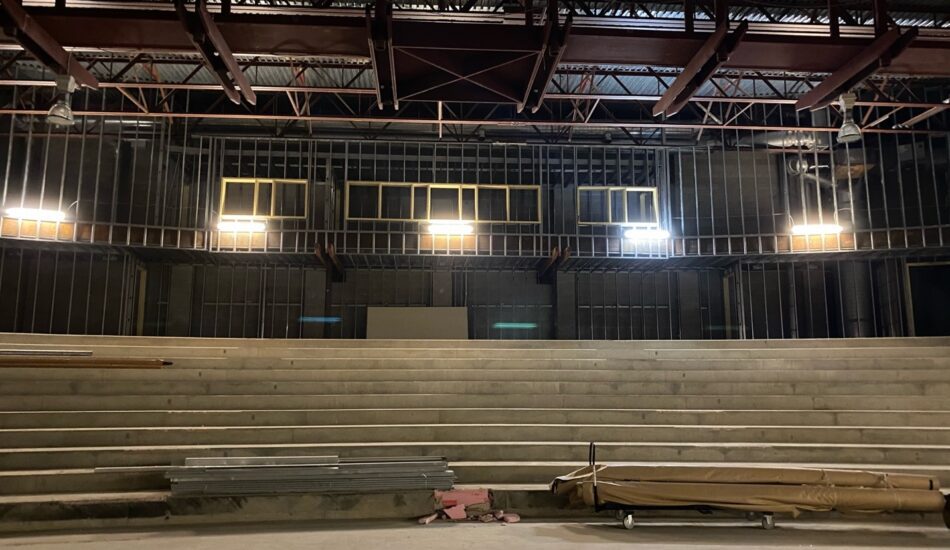Photos and story by Alex Harrison, Puyallup Tribal Member
The campus for Chief Leschi Schools was built in 1996. At 200,000 square feet, it is the largest Bureau of Indian Affairs’ school in the country.
The school’s architects roughed in an auditorium when the foundation was built. The overall structure of the auditorium including the exterior shell, large mechanical air handling units, majority of the steel light gauge framing, and most of the door frames have already been constructed. Later this year, crews are expected to begin finishing the space.
The construction project will complete the original structure and include revisions to comply with building code changes made sine 1996. This includes mechanical, electrical, low voltage data, rough carpentry, insulation, drywall, framing, flooring, life safety, fire protection, painting, and ADA compliance. There will also be specialty construction associated with the stage and theater such as curtains and sound projection.
Puyallup Tribal Government Relations Director Ehren Flygare was instrumental in securing funding from the Bureau of Indian Education and the State of Washington, which granted $3.5 million dollars to begin construction in 2018.
“The funding from the state was a great example of leadership,” said CLS Superintendent Marc Brouillet.
The state set a precedent by showing a willingness to support a tribal school with a budget that is normally reserved for state managed K-12 programs. The project is currently around 65-70 percent finished with most the steel work done. The school is looking for bids to finish the remaining work, and expects it to take between 10-12 more months to finish. The school is in the process of securing the last bit of funding. It is estimated that the finishing work will cost around $500,000 to $800,000.
The reason that Chief Leschi went after state funding for a tribal school is that there is an inequity in school funding. The vast majority of Puyallup Tribal members who live within the boundaries of the reservation do not live on trust land. This means they pay various property taxes and other property assessments, like bonds and levies that are used to pay for K-12 capital and operations uses. The state funding was an opportunity for the state Legislature to bring some equity back to the tribal community, according to Flygare.
Last year, the COVID-19 pandemic affected the project, particularly with its planning and development.
“The architects had to work from home, which slowed down the progress and created confusion on what the final costs would be,” said CLS Director of Operations Bill Veliz. “We had to shut the project down for most the year and are still at a standstill waiting for final decisions to be made.”
A place for teaching and community
Historically, the tribe and school has used the Chief Leschi gymnasium for events and teaching space. The auditorium will have enough room to hold school events, school programs, language center events, tribal funerals, and other community events.
“The auditorium will be more than a Chief Leschi asset, it will be a community center,” Brouillet said.
It will also be a huge upgrade for many teachers to offer their classes in.
Choir and Band teacher Taylor Williams said that her students have been preforming in the gym for as long as she’s been a teacher at Chief Leschi.
“I’m excited to have a place worthy of my students’ talents and somewhere to showcase them,” Taylor said. “I’m also thrilled that we are giving them a professional space to practice.”
Once finished, the auditorium will be an excellent place for students to explore the audio and visual technology career pathway that the school offers its students. It is one of five career pathways that the school offers students to put them on a trajectory of success post-graduation. Students in journalism, yearbook, video production, theater technology, and design, will all be able to use the auditorium to learn skills and techniques to work in a variety of creative design and entertainment fields.





